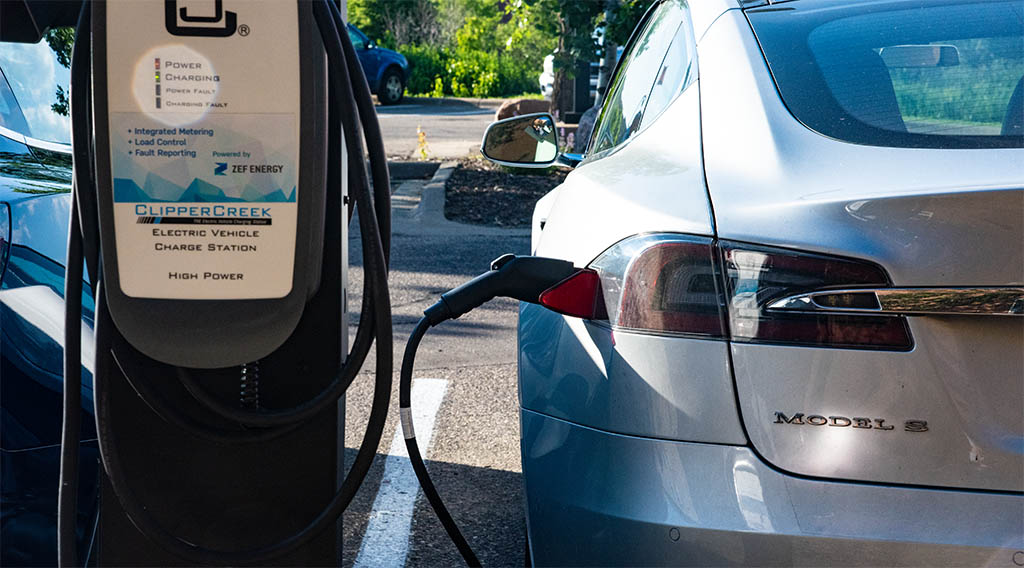COVID-19 Impact on EV and EV Infrastructure Market

Increased focus on EV charging infrastructure means the sector could see exponential growth in what is already a hot market
Post COVID-19, the “COVID-19 Impact on EV and EV Infrastructure Market by Vehicle (Passenger Cars and Commercial Vehicles), Propulsion (BEV, PHEV and FCEV), Charging Station (Normal and Super) and Region – Global Forecast to 2021“, size is projected to reach 4.18 million units by 2021 from an estimated 3.42 million units in 2020, at a CAGR of 22.1%. The projection for 2021 is expected to be down by 34% as compared to the pre-COVID estimation Increasing vehicle range per charge for electric vehicles and the growing sensitivity of various governments toward a cleaner environment are the key factors driving the growth of the global electric vehicles and its infrastructure market. Technological advancements in EV charging and substantial investments from automakers in EVs are some of the major factors driving the growth of electric vehicles. Thus, the electric vehicle market is expected to grow significantly in the near future.
“Asia Oceania is expected to lead the market during the forecast period”
Asia Oceania is expected to be the largest electric vehicle market by 2021 due to the rising demand for greener transportation along with several initiatives by private organizations as well as governments. The COVID-19 crisis has caused a slowdown in China’s economic growth. Still, the country is in the leading position in terms of the largest EV market, followed by Europe and the US, thus making Asia Oceania the market leader during the forecast period.
The governments of developing economies have recognized the growth potential of the electric vehicle market, and hence, have undertaken different initiatives to attract OEMs to manufacture electric vehicles in domestic markets. For instance, in March 2019, the Indian government announced the second phase of FAME – II, which includes setting up 2,700 charging stations in metro cities. Also, the Indian government plans to make it mandatory for cab-hailing companies Ola and Uber to have 40% of their fleet as electric vehicles.
China is also investing heavily in the production of commercial electric vehicles with plans for export. OEMs such as BYD plan to open plants in other parts of the world to manufacture electric buses and electric trucks to meet regional demand. Despite COVID-19 impact, the EV charging infrastructure in Japan is already at an advanced stage; thus, EV sales and electric vehicle charging stations market are expected to grow significantly in the near future. All these factors will drive the electric vehicle market in the Asia Oceania region.
“Charging station market for electric vehicles to grow at the highest CAGR between 2020 and 2021.”
The COVID-19 outbreak and the draconian measures deployed in China resulted in extensive disruptions to economic activities, which delivered a hard blow to the economy. Thus, most governments from affected regions have resorted to infrastructure rehabilitation as an economic stimulus method. The electric vehicle charging infrastructure sector has had a minimal impact from COVID-19. For instance, the Chinese government announced stimulation packages toward boosting the development of a network of electric vehicle charging stations. Increased focus on EV charging infrastructure means the sector could see exponential growth in what is already a hot market.
“The supercharging segment is expected to grow at the highest CAGR”
Tesla pioneered the installation of supercharging stations across the world. These super-fast charging stations can charge an EV battery in approximately 30 minutes. However, superchargers are exclusive only to Tesla EVs and do not function on other manufacturer’s models. As of January 2019, Tesla had over 1,400 supercharging stations across the world. With the mounting planned production of Tesla EVs that are set to be launched over the next few years, the supercharging segment is expected to grow in tandem.
Some of the major players in the Electric Vehicle And Electric Vehicle Infrastructure Market are Tesla (US), BYD (China), BMW (Germany), Volkswagen (Germany), and Nissan (Japan), LG Chem (S. Korea), Panasonic (S. Korea), and Bosch (Germany) among others.
Browse Related Report:
Electric Vehicle Charging Stations Market by Charging Level (Level 1, Level 2 & Level 3), Application (Public & Private), Charging Infrastructure, Electric Bus Charging, Installation (Portable Charger & Fixed Charger), Charging Station type & Region – Global Forecast to 2027
Wireless Charging for Electric Vehicle Market by Power Supply (3–<11, 11–50, & >50 KW), Application (Home & Commercial), Distribution channel (Aftermarket & OE), Component, Charging System, Propulsion, Vehicle type, & Region – Global Forecast to 2027
Category: Electric Vehicles, Featured, Fuel & Oil, General Update, Green, News










